Green chalcedony with white spherulites drawing orbs - Indonesia
- Details
- Created: Sunday, 21 July 2024 15:58
The cabochon presented in the Figure 1 was cabbed from a rough material seen for the first time in Sainte-Marie-aux-Mines Mineral Show in 2023. The white spots on a transparent green background are very attractive. Initially identified as opal reportedly from Indonesia and as it is quite unusual to get orbs in opal, no doubt, the gemstone must be scrutinized with classical gemological tools and spectroscopy to try to get more about it.
Lens googling has not yet returned any similar material (rough and gemstone) except those offered by the dealer this cabochon is coming from.
The Figure 2 shows the color perception with reflected and transmitted light, the Figure 3, a closer view to the orbs / spherulites, and the Figures 4 & 5, the details of the inclusions coloring the gemstone.
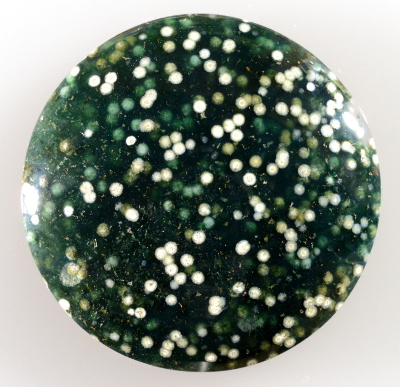 Figure 1. The cabochon of 34.27 ct measures 28.7 mm in diameter.
Figure 1. The cabochon of 34.27 ct measures 28.7 mm in diameter.The chalcedony material is colored dark green and it contains a lot
of small white to gray spherulites.
| Shape | round cabochon |
| Size | Ø 28.7 x 5.7 mm |
| Color | dark green with white to gray orbs in reflected light, emerald green in transmitted light (see Figure 2) |
| Diaphaneity | transparent |
| Lustre | vitreous |
| Weight | 34.27 ct |
| SG | 2.46 |
| RI | 1.530 (read from flat area from the back), chalcedony in litterature: 1.530 - 1.545 |
| DR | - |
| Pleochroism | - |
| Polariscope / Conoscope | stays light through a full 360° rotation -> polycrystalline |
| SWUV | inert |
| LWUV | inert |
| Magnetic susceptibility N52 | very very slightly attracted unlike most of quartz that are diamagnetic |
| Chelsea filter | inert |
Table 1. Observational and measured properties
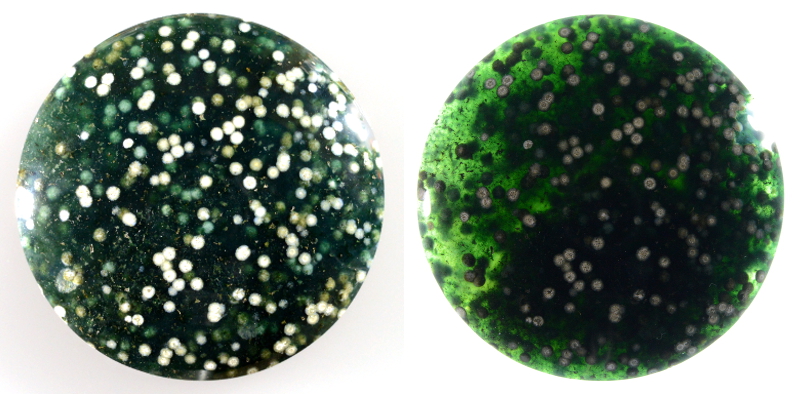
Figure 2. Comparison of the gemstone's colors as seen in reflected light (normal viewing) on the left and as seen by transmitted light
(backlighted) on right. If in reflected light the color is dark green with some bluish green hue, in transmitted light the color is of a beautiful
green that looks like emerald, chrome tourmaline, tsavorite garnet or even some diopside.
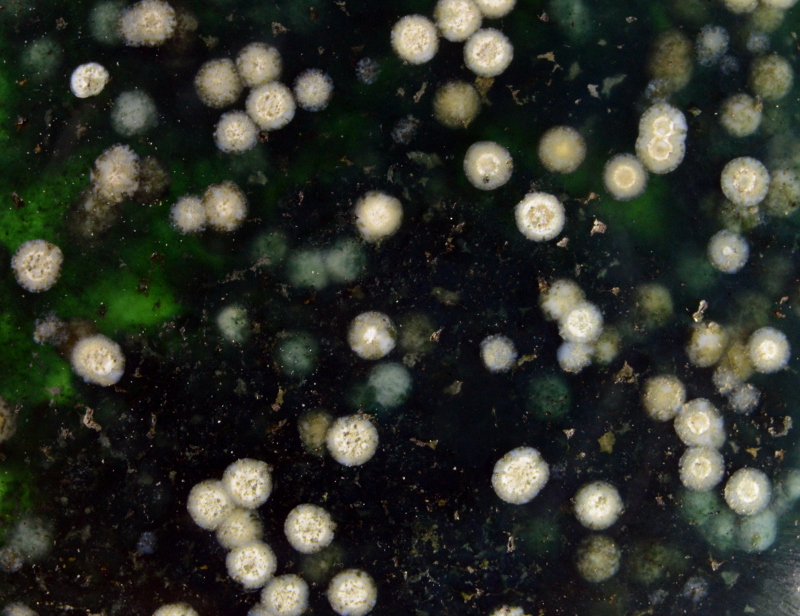
Figure 3. This chalcedony gemstone contains numerous white to gray spherulites that cut at the surface of the cabochon looking like orbs.
They look like a fused core, kernel or seed where on top of that, developed radially short and tiny acicular crystals. There is also a lot of
undefined form inclusions colored kaki or brown and some other with a metallic luster.
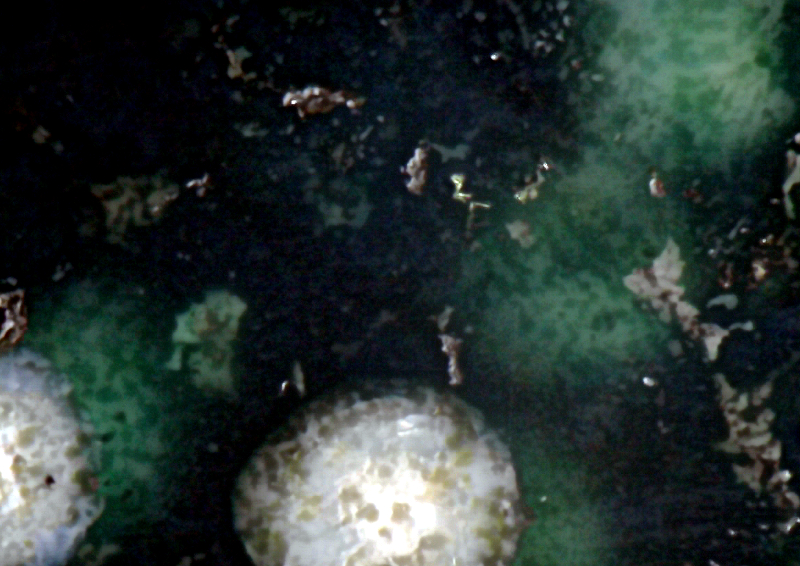
Figure 4. The chalcedony contains a large number of green inclusions of undefined form at least at the binocular observation. They are
better seen when they are in front of a white background (spherulite). The material being cloudy, it is difficult to view and take a picture of the
inclusions details. The green gemstone's color is not that of the chalcedony itself but it is caused by its green inclusions. The width of the
picture correspond to ~3 mm.
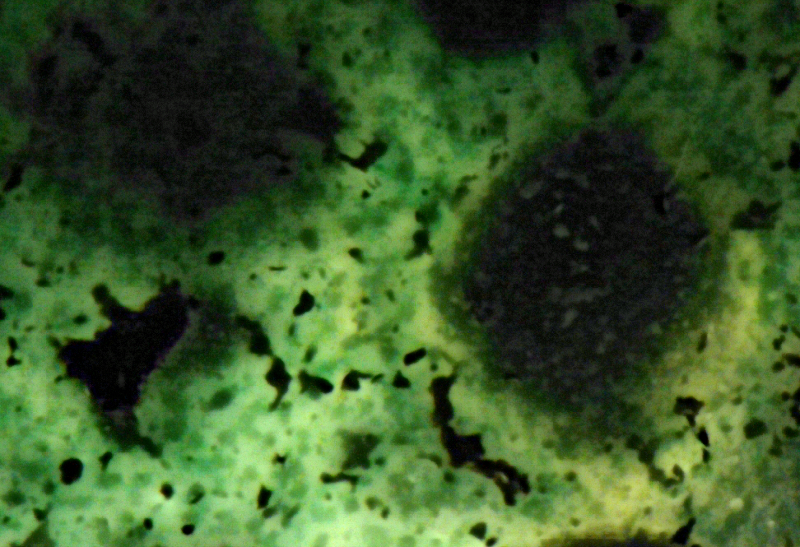
Figure 5. Another area of the gemstone backlighted where the green inclusions can be distinguished among the others. The width of the
picture correspond to ~3 mm.
Infrared reflectance spectroscopy:
The Infrared reflectance spectra were collected from the top of the cabochon trying to get a spectrum for a cut spherulite but without success. The spectra of the overall material yielded a common spectrum as displayed in Figure 6. It showed a characteristic pattern of chalcedony which is a polycrystalline quartz.
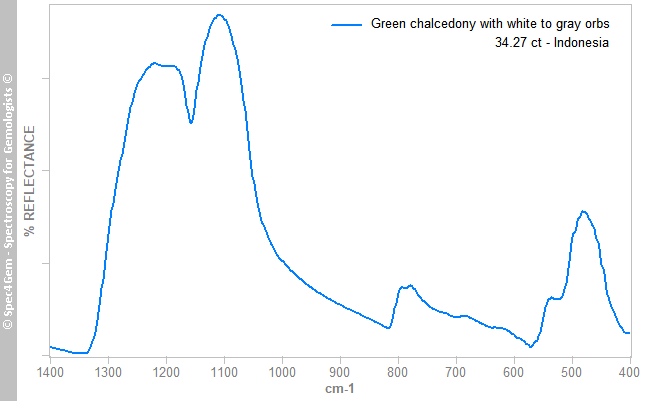 Figure 6. The IR reflectance spectrum of the overall material of the cabochon characterizing it as chalcedony (a form of polycrystalline quartz).
Figure 6. The IR reflectance spectrum of the overall material of the cabochon characterizing it as chalcedony (a form of polycrystalline quartz).Raman spectroscopy:
The Raman spectra were collected from the green areas, all yielded the spectrum shown in Figure 7. It shows the cabochon material is quartz (464 cm-1) with some amount of moganite (500 cm-1). It is consistent with chalcedony.
Collecting Raman spectra from a white spherulites did not give any Raman spectrum because of the strong laser light scattering creating a background of high intensity dazzling the spectrophotometer.
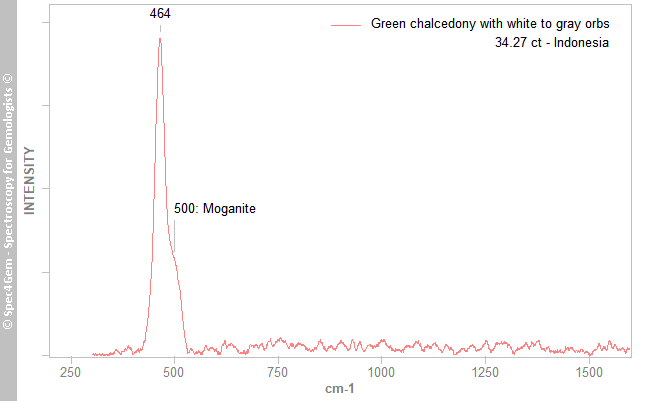 Figure 7. The Raman spectrum of the green parts shows the material is chalcedony, quartz (464 cm-1) and moganite (500 cm-1).
Figure 7. The Raman spectrum of the green parts shows the material is chalcedony, quartz (464 cm-1) and moganite (500 cm-1).UV-VIS-NIR spectroscopy:
The absorbance spectrum over the VIS-NIR range was collected in a transparent green area without any spherulite. The spectrum is shown in the Figure 8 and it shows three strong absorptions, the first one in the UV, violet and blue, the second one with a broad band peaking at 750 nm and the last one, another broad band peaking around 920 nm. There is also a shoulder at 450 nm and a weaker one around 500 nm which is almost invisible in the spectrum drawing. The spectrum with its two strong absorptions (< 450 nm and 750 nm) forms a transmission window centered at 535 nm, that causes the green color of the gemstone.
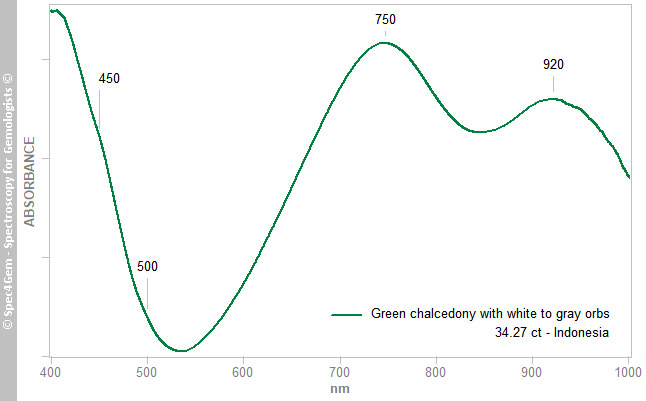 Figure 8. The VIS-NIR spectrum of the cabochon that shows a transmission window centered around 535 nm that results in the green colored gemstone.
Figure 8. The VIS-NIR spectrum of the cabochon that shows a transmission window centered around 535 nm that results in the green colored gemstone.In Figure 9, the VIS-NIR spectrum of the gemstone is compared to the spectrum of a green clinochlore from Madagascar. The Spectra are very similar except the chalcedony one is shifted of about +25 nm for its range which is above 500 nm. Green clinochlore is colored by iron and especially Fe2+-Fe3+ IVCT. The 450 and 500 nm features are quite common in iron's spectra. It is rather safe to assume the present chalcedony is colored by another mineral itself colored by iron. Clinochlore from chlorite group or another mineral of the same mineral group could be a good candidate.
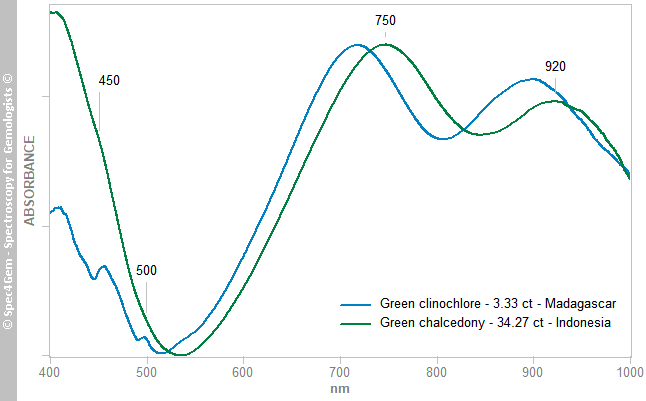 Figure 9. Comparison of the gemstone spectrum to the spectrum of a 3.33 ct green clinochlore from Madagascar that shows similarities. Above 500 nm, the chalcedony's spectrum is only shifted by +25 nm compared to the clinochlore's one.
Figure 9. Comparison of the gemstone spectrum to the spectrum of a 3.33 ct green clinochlore from Madagascar that shows similarities. Above 500 nm, the chalcedony's spectrum is only shifted by +25 nm compared to the clinochlore's one.Photoluminescence spectroscopy:
As the exposition to SWUV and LWUV lamps did not induced any visible luminescence, some tries were conducted with 405, 447 and 532 nm lasers without any result.
Conclusion:
An interesting cabochon of green chalcedony that owes its color to its embedded green mineral inclusions, possibly a chlorite mineral colored by iron. The other uniqueness of this chalcedony gemstone is the abundant white to gray spherulites that are not yet identified but that could be cristobalite ones.

